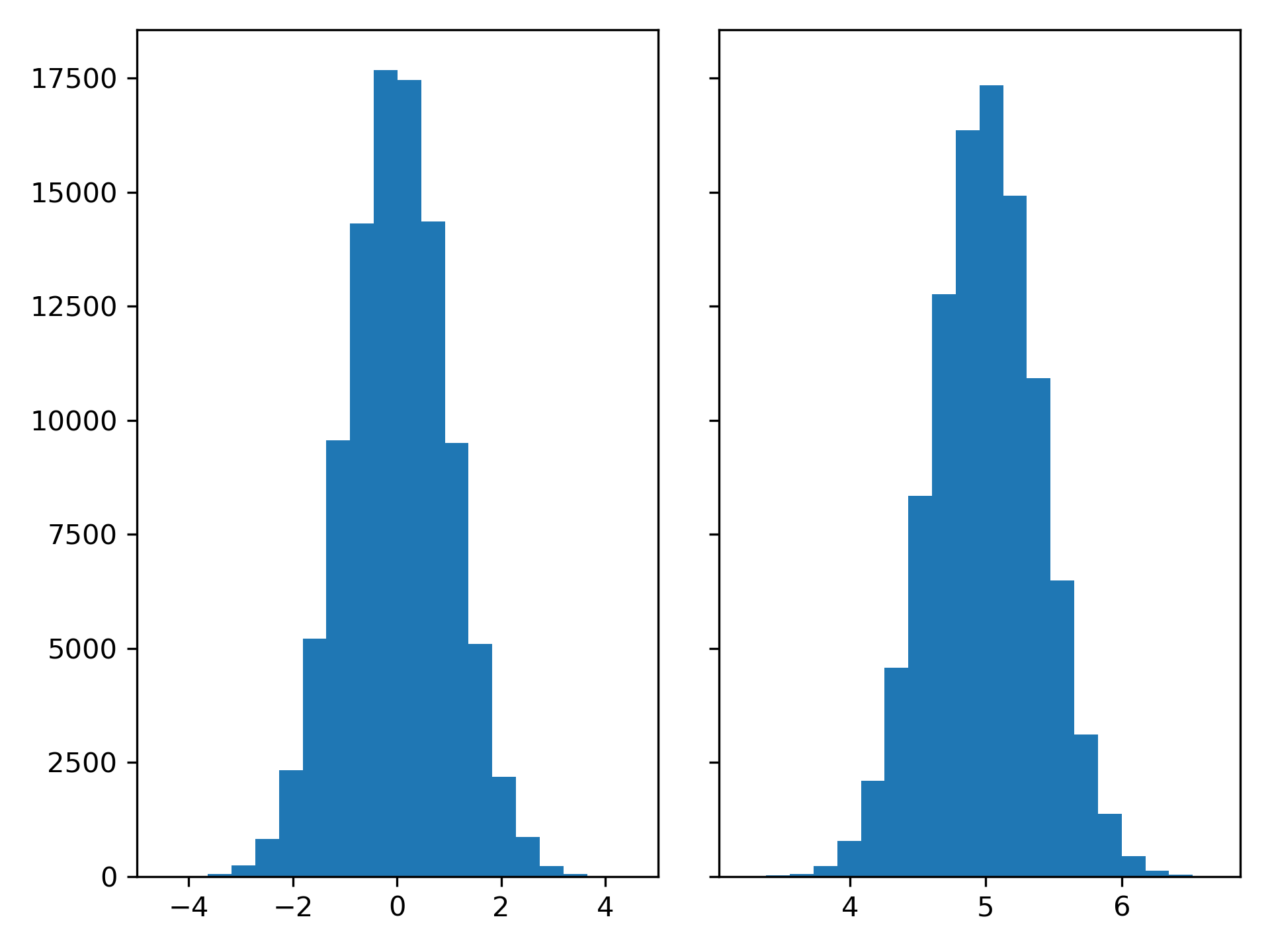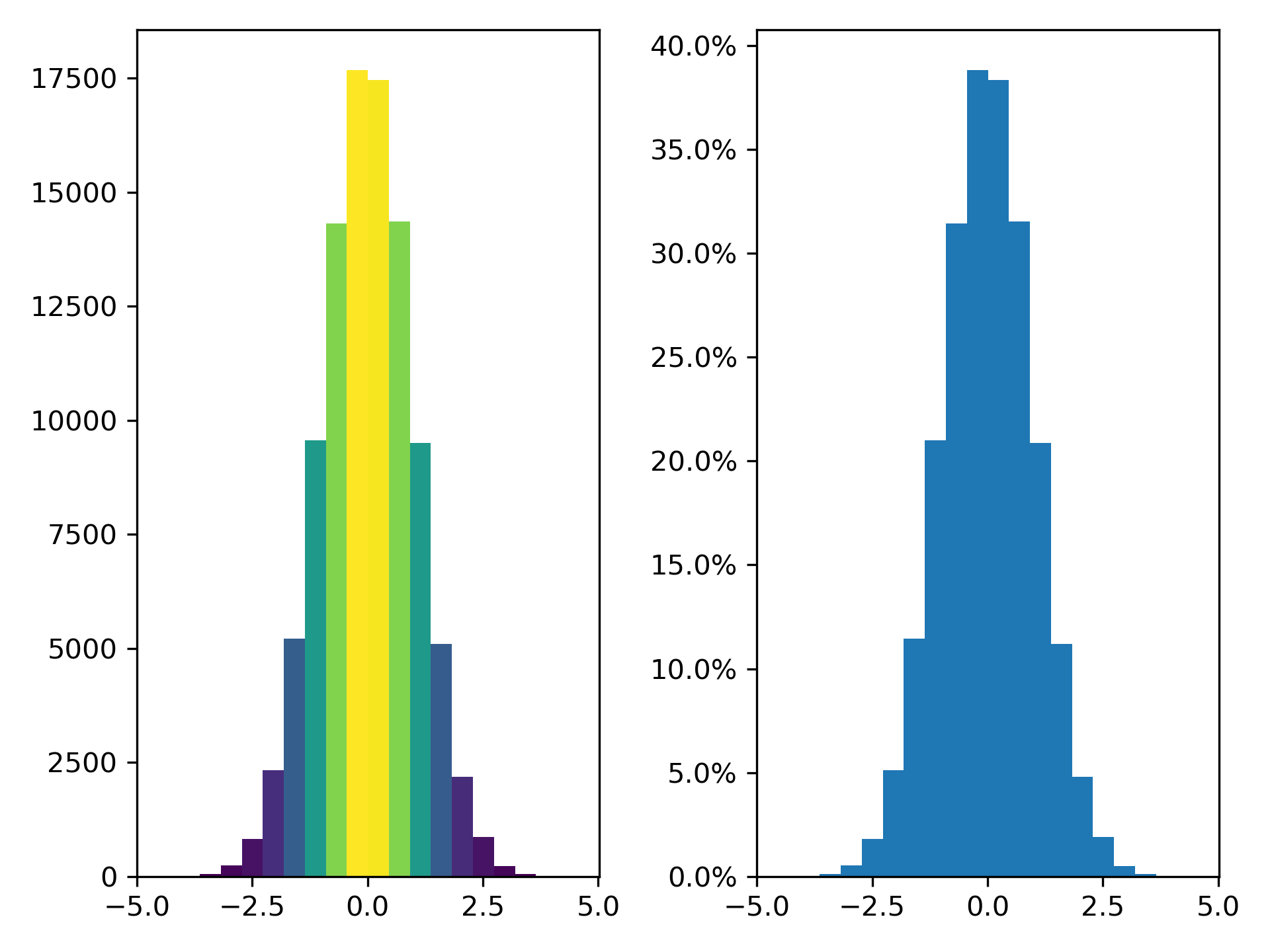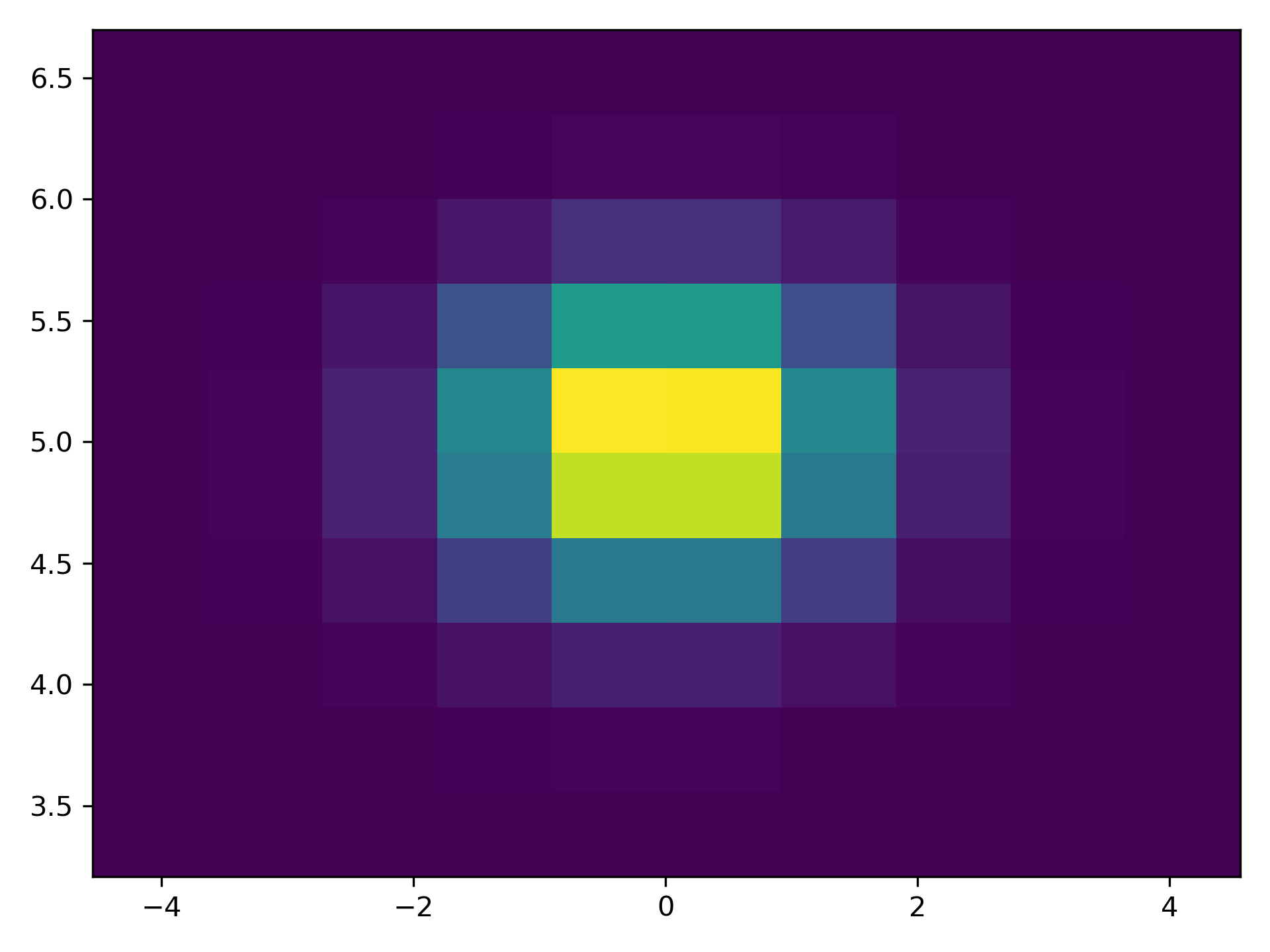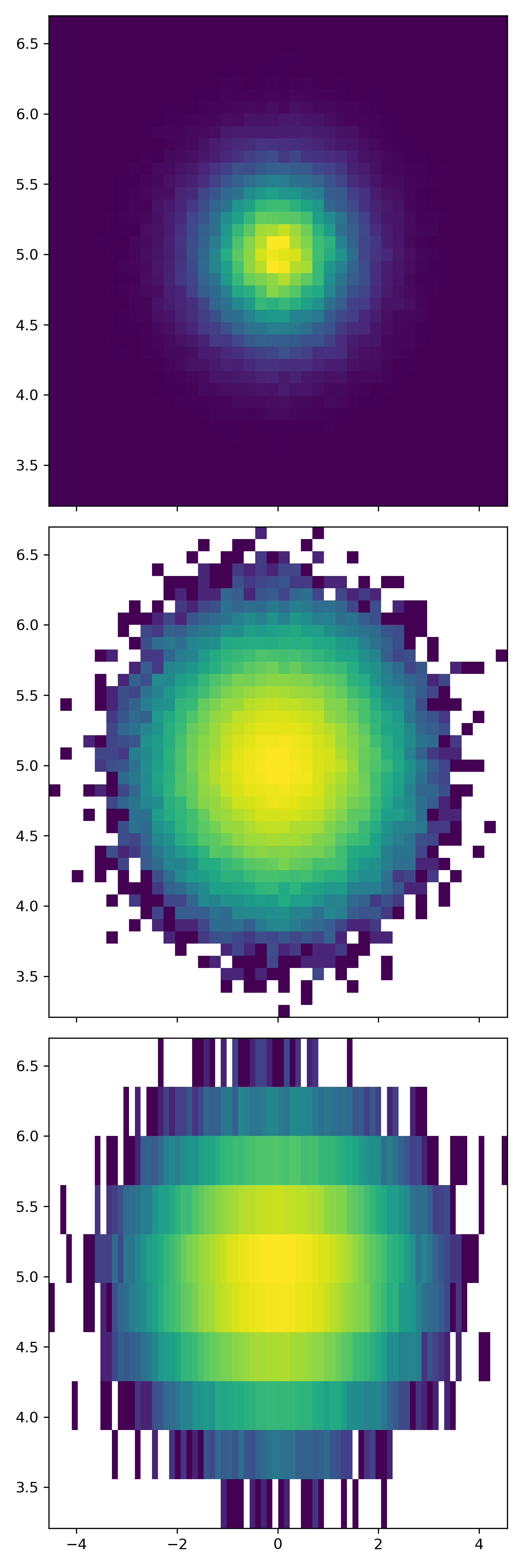>>> """
==========
Histograms
==========
How to plot histograms with Matplotlib.
"""
...
... import matplotlib.pyplot as plt
... import numpy as np
... from matplotlib import colors
... from matplotlib.ticker import PercentFormatter
...
... # Create a random number generator with a fixed seed for reproducibility
... rng = np.random.default_rng(19680801)
...
... ###############################################################################
... # Generate data and plot a simple histogram
... # -----------------------------------------
... #
... # To generate a 1D histogram we only need a single vector of numbers. For a 2D
... # histogram we'll need a second vector. We'll generate both below, and show
... # the histogram for each vector.
...
... N_points = 100000
... n_bins = 20
...
... # Generate two normal distributions
... dist1 = rng.standard_normal(N_points)
... dist2 = 0.4 * rng.standard_normal(N_points) + 5
...
... fig, axs = plt.subplots(1, 2, sharey=True, tight_layout=True)
...
... # We can set the number of bins with the *bins* keyword argument.
... axs[0].hist(dist1, bins=n_bins)
... axs[1].hist(dist2, bins=n_bins)
...
...
... ###############################################################################
... # Updating histogram colors
... # -------------------------
... #
... # The histogram method returns (among other things) a ``patches`` object. This
... # gives us access to the properties of the objects drawn. Using this, we can
... # edit the histogram to our liking. Let's change the color of each bar
... # based on its y value.
...
... fig, axs = plt.subplots(1, 2, tight_layout=True)
...
... # N is the count in each bin, bins is the lower-limit of the bin
... N, bins, patches = axs[0].hist(dist1, bins=n_bins)
...
... # We'll color code by height, but you could use any scalar
... fracs = N / N.max()
...
... # we need to normalize the data to 0..1 for the full range of the colormap
... norm = colors.Normalize(fracs.min(), fracs.max())
...
... # Now, we'll loop through our objects and set the color of each accordingly
... for thisfrac, thispatch in zip(fracs, patches):
... color = plt.cm.viridis(norm(thisfrac))
... thispatch.set_facecolor(color)
...
... # We can also normalize our inputs by the total number of counts
... axs[1].hist(dist1, bins=n_bins, density=True)
...
... # Now we format the y-axis to display percentage
... axs[1].yaxis.set_major_formatter(PercentFormatter(xmax=1))
...
...
... ###############################################################################
... # Plot a 2D histogram
... # -------------------
... #
... # To plot a 2D histogram, one only needs two vectors of the same length,
... # corresponding to each axis of the histogram.
...
... fig, ax = plt.subplots(tight_layout=True)
... hist = ax.hist2d(dist1, dist2)
...
...
... ###############################################################################
... # Customizing your histogram
... # --------------------------
... #
... # Customizing a 2D histogram is similar to the 1D case, you can control
... # visual components such as the bin size or color normalization.
...
... fig, axs = plt.subplots(3, 1, figsize=(5, 15), sharex=True, sharey=True,
... tight_layout=True)
...
... # We can increase the number of bins on each axis
... axs[0].hist2d(dist1, dist2, bins=40)
...
... # As well as define normalization of the colors
... axs[1].hist2d(dist1, dist2, bins=40, norm=colors.LogNorm())
...
... # We can also define custom numbers of bins for each axis
... axs[2].hist2d(dist1, dist2, bins=(80, 10), norm=colors.LogNorm())
...
... plt.show()
...
... #############################################################################
... #
... # .. admonition:: References
... #
... # The use of the following functions, methods, classes and modules is shown
... # in this example:
... #
... # - `matplotlib.axes.Axes.hist` / `matplotlib.pyplot.hist`
... # - `matplotlib.pyplot.hist2d`
... # - `matplotlib.ticker.PercentFormatter`
...







